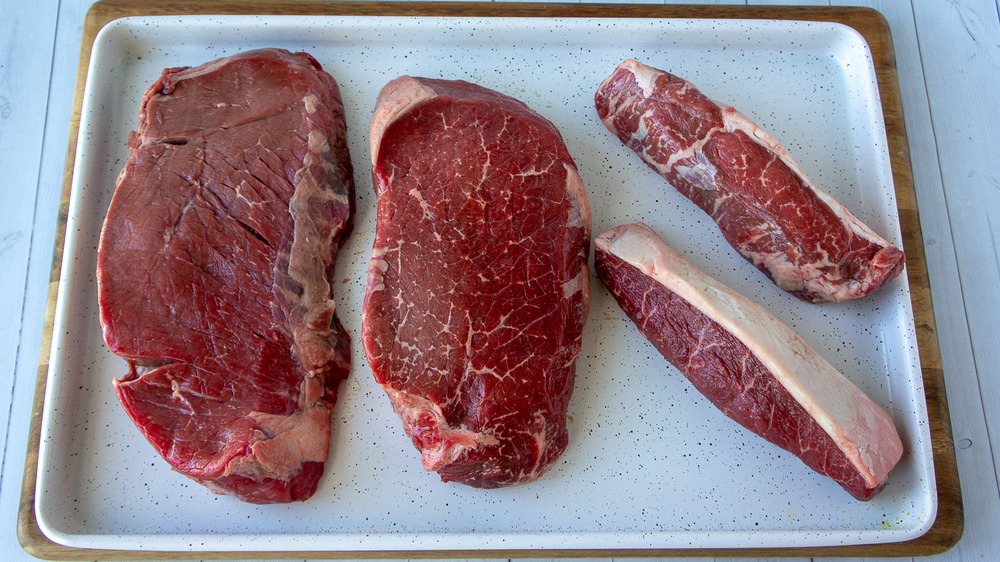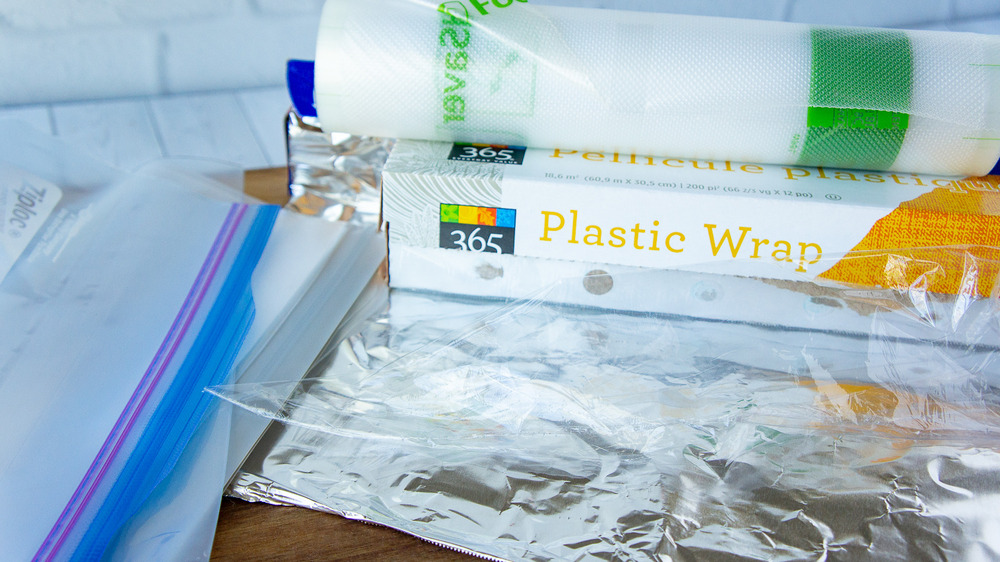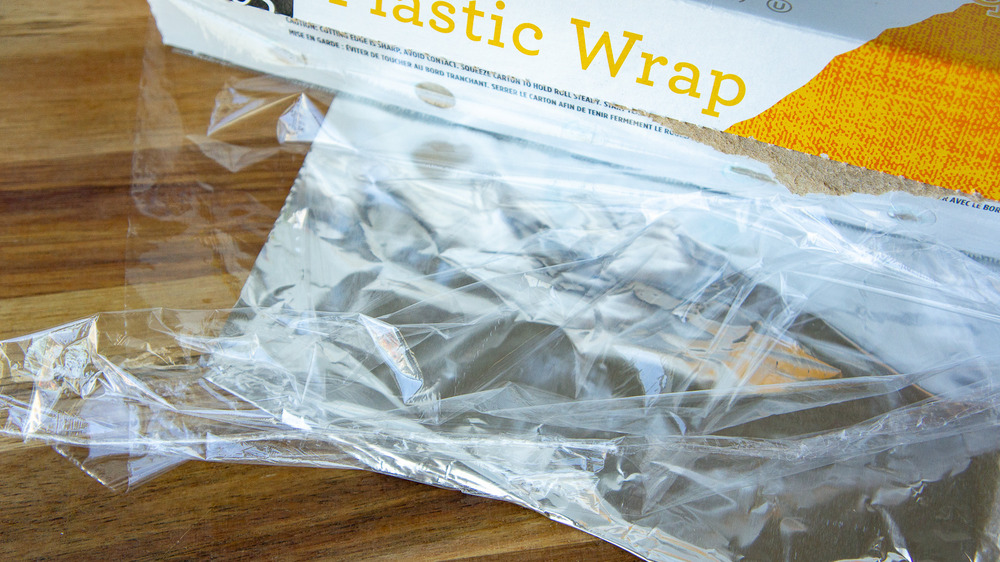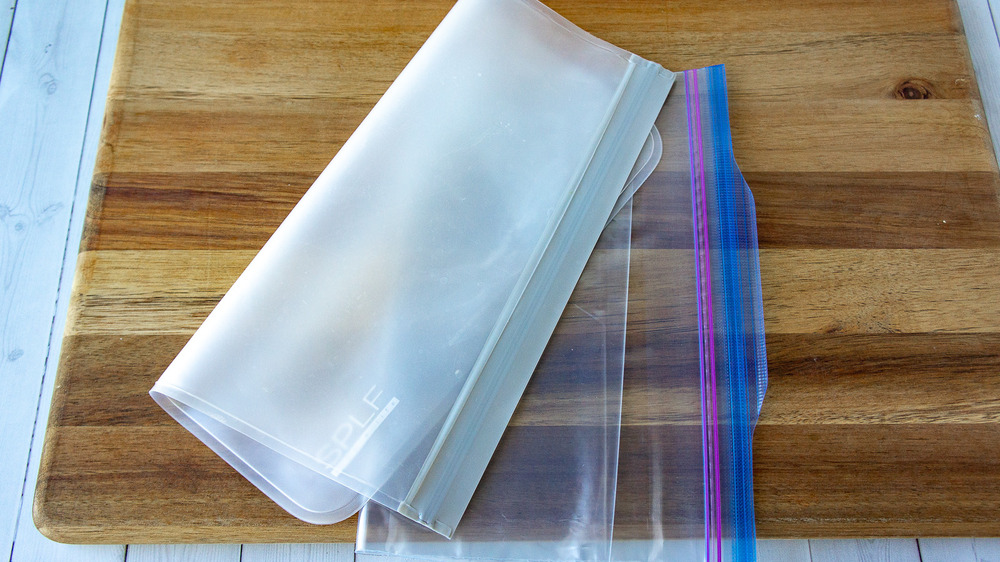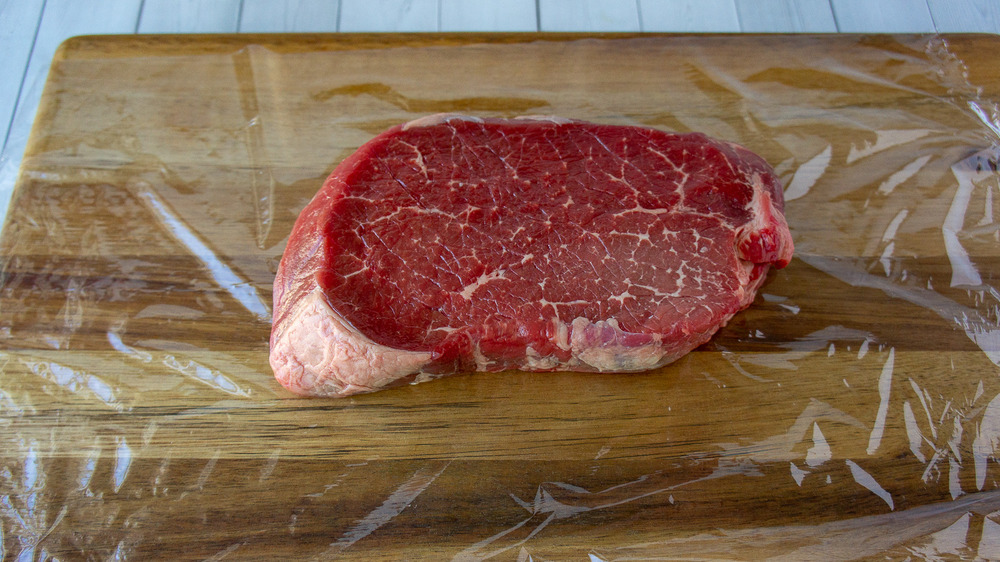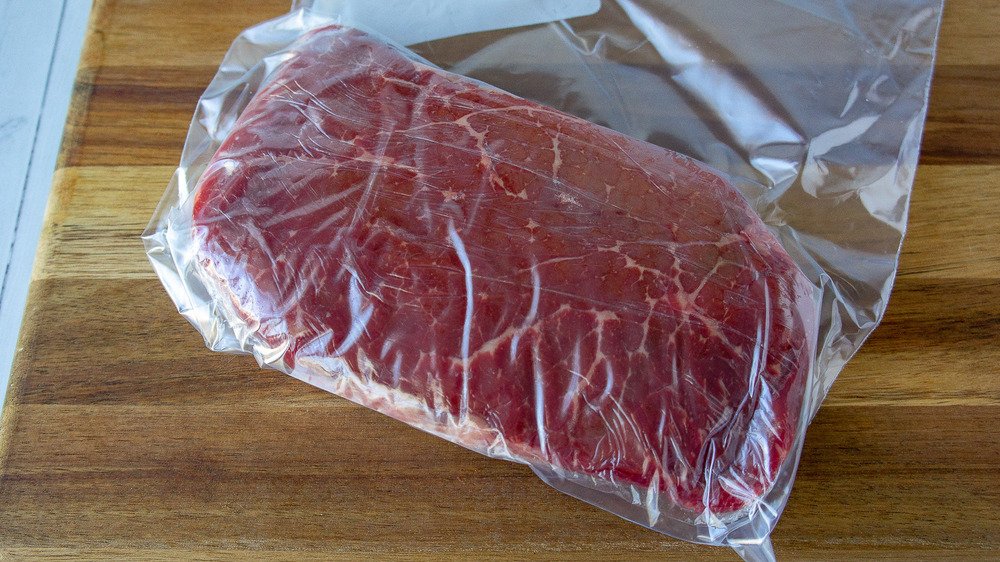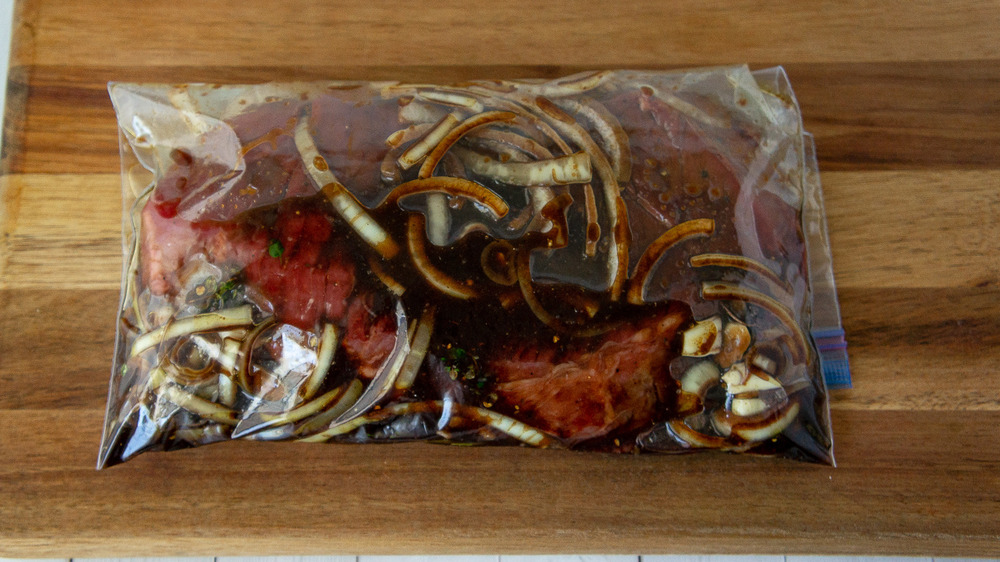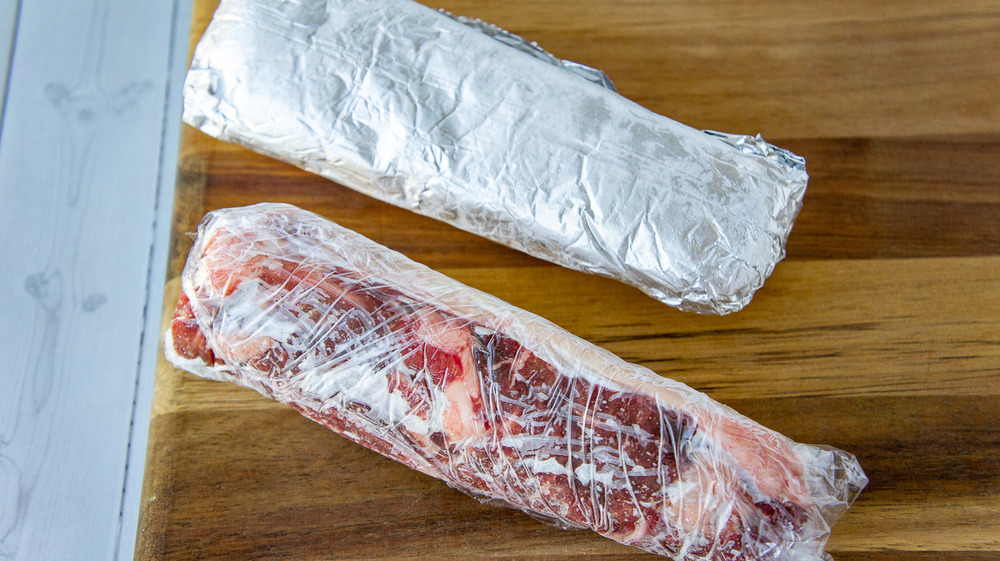How To Freeze Steak
When it comes to making sure your beautifully marbled ribeye steaks, beef roasts, hanger steaks, and tender filet mignons are still fresh and delicious when you are ready to cook them, the freezer can be your best friend. But, before you chuck a whole package of steaks in the freezer and assume they'll be good to go in a few months, let us show you how to freeze steaks properly. With just a little bit of planning and preparation, those steaks will emerge as beautiful and frost-free as when they went in.
With a few quick tips and the right materials, you can freeze any cut of steak, whether it's raw, cooked, or pre-seasoned. Plus, this saves on a ton of potential waste. Once you see how easy it is to maintain the quality of your steaks in the freezer, you'll never toss a piece of freezer burned sirloin in the garbage again.
Read more cooking tips and recipes from Mikayla on her blog The Flour Handprint.
Start with the right materials for freezing steak
One of the easiest ways to mess up freezing a steak is simply not using the right materials. As tempting and easy as freezing steaks in a plastic bowl or the original packaging may be, that's not the best idea for maintaining quality. While it might be okay to freeze beef bones or scraps for stock this way, for steaks that you intend to cook and enjoy for a meal, we're more interested in protecting them from the harsh air of the freezer.
To prevent freezer burn, as well as to protect as much of the fresh quality as possible, we need two layers of protection. This can be any combination of plastic wrap, foil, zip-top bags, silicone bags, freezer paper, or vacuum seal bags.
The easiest and most common first layer for freezing steak
There are tons of options out there for sealing your steaks against the harsh environment of your freezer. If you know you'll be freezing steaks on a regular basis, investing in a vacuum seal machine may be beneficial. They only require one layer of material to prevent deterioration of quality, thanks to the airtight nature of the hot seal.
But for most home cooks, a vacuum seal setup simply isn't in their kitchen. If it isn't, you can use a simple combination of plastic wrap and aluminum foil.
A second layer for more airtight protection
That first layer is key for keeping any frost off the surface of the meat, but to really protect the steaks from the cold air of the freezer, we need a second barrier that is airtight. The most common choice is going to be a zip-top bag. These days you can use either a standard plastic bag or a reusable silicone one, so long as the bag zips shut.
Butcher or freezer paper is another option but is not quite as airtight as a bag. If using paper, be sure to wrap your meat very tightly and tape it securely to prevent any air from coming into contact with the surface of the steak.
Start by tightly wrapping your steak in the first layer
When you're ready to wrap the steaks, simply lay out the foil or plastic wrap on a flat surface and place your steak on top. Then fold up the wrapping as tightly as possible, making sure every edge is completely covered.
Then slide the steak into its second layer of protection
Once the steak is wrapped, you can slide it into the bag. To make expelling the air in the bag as easy as possible, try to nestle the steak into the bottom of the bag.
Then zip the bag almost all the way shut, leaving just a finger's width or so open at the corner. Next, fold the bag, pushing as much air out of that open corner as possible. Once you feel that you've pushed out most, if not all, of the air, finish sealing the bag and place your steak in the freezer. Freeze the steak flat if possible, so it won't be misshapen upon thawing.
If you're freezing several smaller steaks, it's completely fine to wrap them each individually then slide them into a shared zip-top bag. So long as the air is fully pushed out without smashing the steaks, they can be frozen together in one bag.
Marinades and rubs for steak hardly change a thing
One of the most common concerns is whether pre-seasoning a steak before freezing is okay. We have good news: it totally is! In fact, giving your steak a rub or freezing it with a marinade is a great way to tenderize a frozen steak before cooking. As it thaws, the rubs and marinades help break down the steaks just enough to produce a juicy, tender final cut.
A rub requires no change to the method. However, for a marinade, it's best to skip the plastic wrap or foil layer. Instead, pour the steak and marinade into a zip-top bag, remove as much air as possible, and then slide it into a second bag for the second layer, again removing as much air as you possibly can.
Freezing raw or cooked steaks is the same
On the heels of the questions about pre-seasoning are usually questions about whether you should freeze steaks raw or cooked. Both are fine. Freezing raw steak is a great way to preserve the quality and to even infuse the cut of meat with flavor through marinades or rubs. However, they have to be thawed and then cooked. For a quick meal that simply needs thawing, freeze steak leftovers instead.
The idea is the same: prevent air and frost buildup on the cooked steaks by thoroughly wrapping them up in an airtight container. You can even freeze cooked steak in their sauces or cooking liquid if you have it handy. Keep in mind that freezing cooked steaks means you'll be reheating them. This will mean extra cooking, which can affect the juiciness and texture of the original cooked meat.
No matter if it's a raw or cooked steak you're freezing, you should consume them within 3 months for the best possible quality. They'll be fine to eat for much longer, but after 3 months, the flavor and texture of the meat may begin to decline. So long as they're wrapped up properly, we think you'll be enjoying steaks from the freezer whenever you're ready.
Recipe Card
To make sure your beautiful steaks are still fresh and delicious when you're ready to cook, the freezer can be your best friend. Here's how to freeze steak.
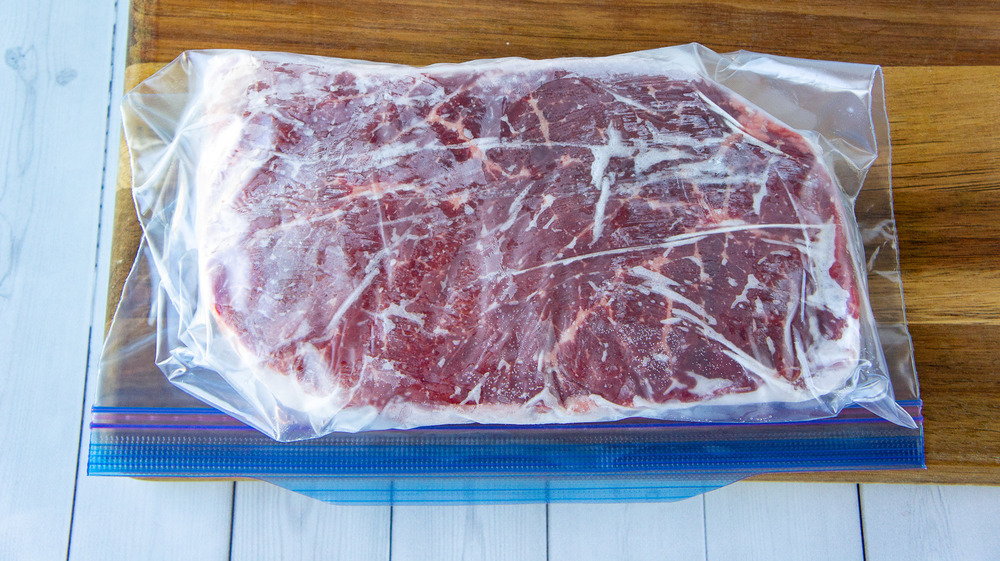
Ingredients
- Steak
- Plastic wrap or foil
- Zip top bag
Directions
- Lay out a sheet of plastic wrap or aluminum foil.
- Place steak on center of sheet and wrap it firmly, ensuring the entire surface is covered.
- Slide wrapped steak into a zip top bag and squeeze out as much air as possible before sealing.
- Place sealed steak into the freezer on a flat surface to freeze.
- Consume within 3 months for best quality.
